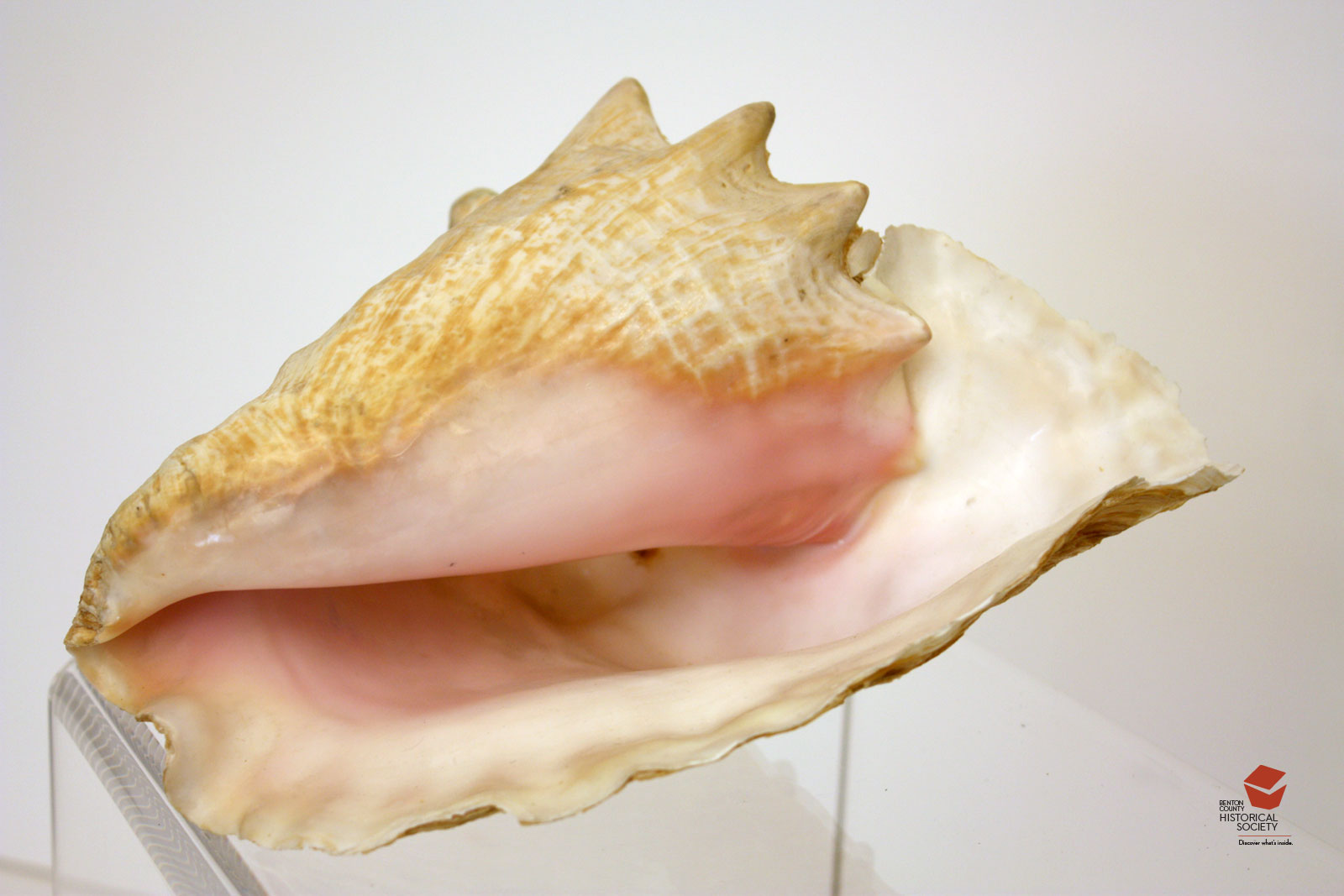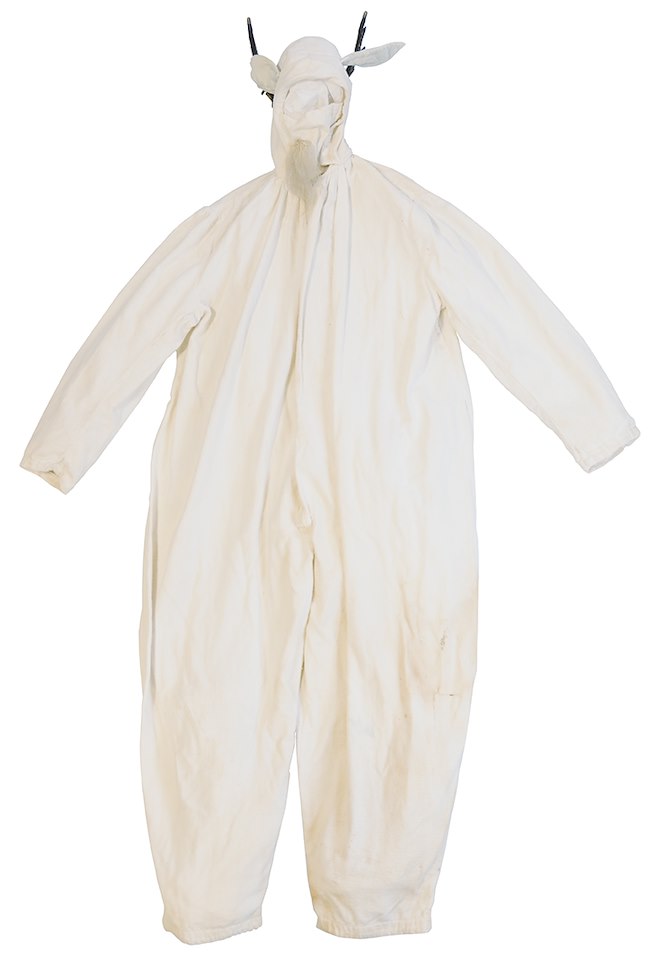When the Benton County Historical Society obtained the Horner Collection from Oregon State University, it acquired hundreds of shells donated by collectors, including Julia Beard, Marvin Avery, Captain and Mrs. R. P. Burrell, and Cordelia Rackleff.
The Burrells collected this queen conch shell at the Margaret Reef off the southwest coast of Puerto Rico.


Conch are gastropods–single-shelled mollusks like snails and unlike clams. The queen conch are large and can grow up to 12 inches long and can weigh up to 5 pounds. They reach their maximum length at maturity (3-4 years) but the shell continues to thicken over time. They typically live for about 7 years but can reach 30 years old in deep water.
Queen conch are found throughout the Caribbean Sea and Gulf of Mexico. Their preferred habitat is a place with a sandy bottom and a bed of sea grass where they can feast on algae and plant matter. They move about by sticking the pointed, stiffened end of their foot into the ground and lifting and pushing forward, a motion which some liken to pole vaulting.
Their numbers have been declining. The pink color of the inside of the lip has made conch shells popular decorations. Conch are also desired for their meat which is used in making stews, fritters, chowders, and many other Caribbean dishes. Native tribes in the Caribbean islands and Florida also used conch shells to make horns, tools, and cookware.
The area where the Burrells found this shell is now part of the La Parguera Natural Reserve.



